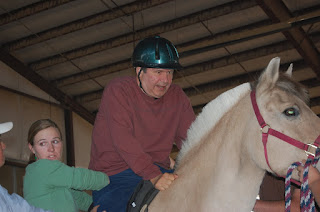The ability to make it happen

Cycling, canoeing, horseback riding, rock climbing, swimming and skiing. For years, the disabled, injured and impaired were told that it was impossible to participate in these activities. That way of thinking changed about 11 years ago in Park City, Utah. This was when an anonymous donor provided the funds to help create the National Ability Center. Set on 26 acres of land outside of Park City, the National Ability Center provides sports and recreational opportunities for those with disabilities. Whether it’s a brain injury, ADD, Down Syndrome or Spina Bifida, participants are given the chance to reach their physical potential through the use of adaptive saddles, hand cycles and customized ski equipment.
“Society used to cast those with disabilities aside,” says J. Ryan Jensen, the Marketing-Outreach Manager for the National Ability Center. “Here, we make it possible for them to be a part of society.” The National Ability Center -- known as the NAC -- includes a 17,000-square-foot indoor horseback-riding arena, an outdoor riding arena, stables, universal challenge course, 32-foot indoor climbing wall, fully integrated playground and barrier-free trails.
Like a kid in a candy store, Jensen tours the grounds in ankle-deep snow towards the riding stables. “Here are our horses,” he enthusiastically says. “Back there is a horse we use for Hippotherapy.” Hippotherapy rehabilitates participants who have neurological diagnoses such as, Cerebral Palsy, Multiple Sclerosis, Parkinson’s Disease and Autism.
Using horses as a form of rehabilitation isn‘t a quick sell for all participants. “We had a rather big guy who was in our program and he didn’t want to get on a horse,” Jensen recalls. “Towards the end of his stay, he got on the horse and it was incredible moment. I’m not totally sure, but I think there were tears in his eyes.”
To eliminate the feeling of isolation in the center’s program, Jensen said that friends and family are encouraged to participate. “The families get a real feel for what the patients go through here,” Jensen says. “They also get a sense of how much progress is made.”
Slope-side rehabilitation
The National Ability Center operates a ski program out of a trailer at the nearby Park City Mountain Resort. The NAC’s trailer is equipped with special ski equipment alongside the resort’s slopes. “The Resort was so kind in giving us the space to let us operate our ski program here,” Jensen says, as he watches participants gear up for a session on its slopes.
Wounded Warriors are welcome
As everyone greets Jensen inside the trailer, he mentions how the NAC partnered with the Wounded Warriors Project, a program that aids military personnel. “There are many wounded who are coming back from war with injuries and disabilities,” says Jensen. “This is an excellent opportunity for them.”
There is a financial reality with this program. The cost of participating in it can add up. Since the NAC doesn’t directly work with insurance companies, participants are responsible for all payments. They may submit the bill to the insurer, but coverage isn’t guaranteed. Also, patients need to obtain an evaluation and treatment prescription from their doctors. While he acknowledges the center‘s costs, Jensen says that the NAC is able to make financial arrangements. “Everyone is in a different situation,” Jensen says. “We want to make this dream a reality for those who wish to participate.”
For more information:
The National Ability Center
http://www.discovernac.org
Wounded Warriors Project
http://www.woundedwarriorsproject.org
Comments